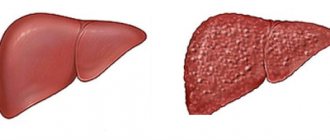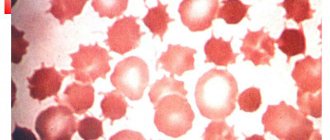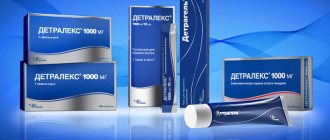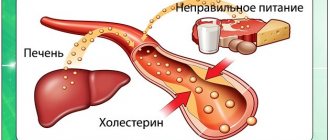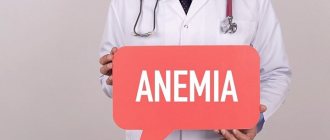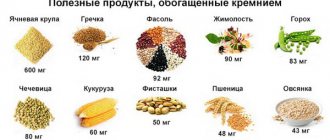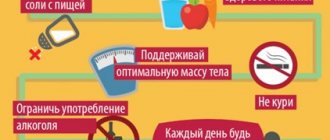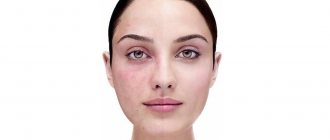Treatment of vascular disease of the legs is a set of medical measures aimed at eliminating the unpleasant symptoms of the disease and improving the patient’s quality of life. Among the methods of treatment of vascular diseases of the extremities, a distinction is made between conservative and surgical.
A group of diseases associated with damage to the vessels of the extremities and disruption of their functions are vascular diseases of the legs. Under the influence of certain factors, occlusions (complete blockage) or stenoses (narrowing) occur in a certain area of the peripheral arteries. As a result, the tissues of the limbs experience an acute lack of oxygen, which they no longer receive in the required volume. The patient feels fatigue, pain when walking, chills in the limbs, at first not attaching any importance to this. Then lameness occurs, pain haunts the person even at rest. In the advanced stage, poorly healing wounds and ulcers appear on the skin of the sore leg, and necrosis begins.
How to treat blood vessels on the legs?
The method of treating leg vessels depends on the diagnosis made by the doctor. Find answers to the question of how to effectively treat unhealthy blood vessels in the legs from doctors at vascular centers in Moscow. There are two main directions in the treatment of vascular diseases of the legs:
- First, reduce the severity of symptoms such as leg pain so that the patient can return to their physical activities.
- Secondly, slow the progression of atherosclerosis to reduce the risk of complications. Treatment without secondary prevention of atherosclerosis will not be effective.
These goals can be achieved with lifestyle changes.
Lifestyle
- To give up smoking. This will reduce the risk of developing complications of atherosclerosis of the arteries of the lower extremities. Smoking leads to arterial damage and is considered a major risk factor for the development and progression of extremity artery disease.
- Exercises. Success in treating peripheral artery disease is measured by pain-free walking distance. Proper exercise helps improve muscle condition so that you can use oxygen more efficiently. The doctor will help you choose the optimal training plan. You will be offered special exercises from the rehabilitation program.
- Proper nutrition. A special diet for the cardiovascular system reduces saturated fat, helps control blood pressure and cholesterol levels, which contribute to the development of atherosclerosis and ischemia of the lower extremities. Diets rich in vitamins A, B-6, C and E, folic acid, fibrates and omega-3 fatty acids are associated with fewer complications of arterial disease.
If lifestyle changes are not enough, you will need additional treatment. It is prescribed for severe forms of diseases, for example, for obliterating atherosclerosis of the vessels of the lower extremities. The doctor will prescribe medications to prevent blood clots, lower blood pressure and cholesterol levels, and for pain relief.
Varicose veins treatment. Sclerotherapy (scleroobliteration)
Third group
treatment is sclerotherapy (scleroobliteration) of the veins of the lower extremities. This treatment technology is used in very different clinical situations - from the elimination of cosmetic vascular defects (reticular veins and spider veins) to sclerosis of large veins of the lower extremities, including the trunks of main varicose veins. Drugs used for sclerotherapy of the veins of the lower extremities are injected into the lumen of the vein using ultra-thin needles with a diameter of 30 G (if we are talking about spider veins), or a slightly larger diameter when sclerosing the veins of the lower extremities of large “caliber”. In any situation, no significant pain syndrome is observed during sclerotherapy. Drugs injected into the lumen of the vein for the purpose of obliterating its lumen can be either liquid consistency or in the form of fine foam (Foam-Form). The Foam-Form method of scleroobliteration of the veins of the lower extremities is carried out by a phlebologist to remove large varicose veins, which allows the procedure to be carried out most effectively.
Sclerotherapy procedure for veins and spider veins
This technique appeared in our country relatively recently (about 10 years ago), but has established itself as objectively the best type of sclerotherapy for varicose veins of the lower extremities.
Today in Moscow, microsclerotherapy of spider veins and a foam form of scleroobliteration of varicose veins are used by a wide range of phlebologists in various medical phlebological centers. However, a seemingly simple procedure requires significant experience and specific skills to achieve a truly good result. Therefore, it is better to contact leading specialists at a good phlebological center in Moscow.
Master class on the treatment of varicose veins with sclerotherapy performed by Dr. Semenov A.Yu.
At the Moscow City Phlebological Center we use only the best technologies, and our specialists are experts in the modern treatment of varicose veins. The improvement of doctors' skills is measured in years and hundreds of successfully treated patients. Artyom Yurievich Semenov, leading specialist and head of the Moscow City Phlebological Center, is an international class phlebologist and a recognized European expert in the field of innovative technologies for the treatment of varicose veins.
The results of treatment of varicose veins using modern techniques at the Innovative Phlebological Center speak for themselves and some of them can be found on the page of my website:
Medicines
- Cholesterol-lowering drugs, statins, are taken to reduce the risk of myocardial infarction or stroke. For people with peripheral artery disease, the goal for low-density lipoprotein (“bad” cholesterol) is less than 100 mg/dL or 2.6 mmol/L. Target values should be lower if you have additional risk factors for heart attack or stroke, especially if you have diabetes or smoke. When treating diabetic angiopathy of the vessels of the lower extremities, attention is paid to combating the underlying disease - diabetes.
- Medicines to lower blood pressure. Their intake is very important in the treatment of vascular diseases. If you have high blood pressure, your doctor will prescribe medications to lower it. The goal of therapy is to reduce systolic pressure (upper number) to 140 mm Hg. and lower, and a decrease in diastolic pressure (lower number) - up to 90 mm Hg. and below. If the patient has diabetes, then the target blood pressure is 130/80 mm Hg.
- Medicines to control blood sugar levels. If you have diabetes, controlling your blood sugar (glucose) levels is important. Diabetic angiopathy and other vascular diseases of the legs are associated with elevated sugar levels. Talk to your doctor about your glucose goals and what you can do to reach them.
- Medicines to prevent the development of blood clots. Because peripheral artery disease reduces blood flow to the lower extremities, it is important to reduce the risk of thrombosis. Blood clots form in vessels during thromboangiitis obliterans and other diseases of the extremities in advanced forms. A blood clot can completely block the affected artery and cause tissue damage. For prevention, you will be prescribed a daily dose of aspirin and/or another drug that helps prevent blood clots.
Causes of blockage of blood vessels
The arterial bloodstream is most often affected by atherosclerosis. It develops in patients, often after middle age, and is characterized by the deposition of cholesterol plaques along large and medium-sized vessels. This occurs due to lipid metabolism disorders.
Normally, “good” and “bad” cholesterol are in balance in the body. But, if total cholesterol, triglycerides and low-density lipoproteins enter excessively, they accumulate on the walls of blood vessels and a plaque forms. Formed elements of blood gradually collect on its surface: red blood cells, platelets. All this leads to a narrowing of the lumen and the artery ceases to function.
Obliterating endarteritis is also a fairly common disease. But it is characterized by the fact that it mainly affects young people and affects small-caliber arteries. This disease is of an autoimmune nature and starts after severe stress, hypothermia, or pathology of the immune system.
With obliterating endarteritis, connective tissue grows on the inside of the artery. Over time, this leads to its occlusion and ischemia of the tissue area that is supplied by it. This plaque cannot be eliminated by any type of vessel cleaning.
Damage to the venous bed is characterized by the following diseases:
- Varicose veins of the lower extremities is a pathology that affects about 30 percent of the world's population. It develops more often in females. It has a genetic predisposition, which manifests itself in a hereditary defect in the structure of collagen A, because of this, the walls of blood vessels become less elastic and overstretch occurs. Blood begins to collect in these areas and, over time, blood clots form.
- Thrombophlebitis is the formation of blood clots in the saphenous vein system. Occurs with decompensation of varicose veins, with injuries or inflammatory diseases in the vessel.
- Deep vein thrombosis of the lower extremities is an acute condition that requires immediate attention to a surgeon, as surgery is needed. Any cleaning of blood vessels at home is contraindicated, as it can cause harm and delaying time will lead to the death of the patient or amputation of a limb.
Latest information: Garlic with honey for varicose veins
Diseases such as diabetes, hypertension, and obesity contribute to the fact that vascular pathologies develop faster and have a more aggressive course. Therefore, procedures aimed only at cleaning the bloodstream will be ineffective or have a temporary positive result.
It is necessary, first of all, to adjust the drug therapy of the underlying disease.
Surgery
Surgical treatment of leg vascular disease is often performed at the stage of complications.
- Shunting. An open operation, the essence of which is to cut off the affected area of the vessel and replace it with a prosthesis. Used for high levels of vascular blockage.
- Minimally invasive endovascular treatment. When the vessels are not completely blocked, most often without incisions and general anesthesia: endovascular surgery comes to the rescue. For diseases of the arteries of the extremities associated with blood flow disorders, balloon angioplasty and stenting are used. The lumen of the narrowed artery is expanded by inflating a special balloon from the inside and installing a metal stent into it, which plays the role of a frame holding the walls of the vessel. Read more about how stenting of leg vessels is performed here.
- Amputation. Indicated when tissue necrosis is irreversible.
Gentle foot care
In addition to the recommendations listed, take care of your feet. In people with vascular disease of the legs, especially in combination with diabetes, wounds on the legs and feet do not heal well. Weakened blood circulation leads to slower treatment and an increased risk of infectious complications.
Follow these tips:
- Wash your feet daily, dry them thoroughly and moisturize them to prevent cracks, as they lead to infection. Avoid moisturizing between your toes as this encourages the development of fungus.
- Wear comfortable shoes and thick, dry socks.
- Treat any fungal infection on your feet thoroughly
- Be careful when cutting your toenails
- Avoid walking barefoot
- If you experience pain or sore skin, consult a doctor
Symptoms accompanying vascular blockage
Each disease has its own manifestations. First of all, the patient should be alerted to frequent pain in the lower extremities. Most often it is of a dull and burning character. Appears after a long stay in an upright position or when walking in uncomfortable shoes. The pain may bother the patient throughout the night.
Over time, swelling appears in the legs. They occur more often with pathology of the venous bed. With prolonged congestion in the veins, the fluid begins to sweat through the walls of the vessels and penetrate into the surrounding tissues.
Also, over time, dilated veins begin to compress the lymphatic ducts. These, in turn, lead to massive swelling, which is difficult to eliminate and does not go away even after sleep, which further worsens the outflow of blood.
In addition, the following symptoms will accompany vascular pathologies:
- cramps in the lower extremities;
- decreased foot temperature;
- absence of pulsation in the main arteries;
- the appearance of a vascular pattern on the skin;
- visualization of dilated saphenous veins;
- the appearance of intermittent claudication;
- violation of the trophism of the skin: dry skin, thinning, decreased hair growth in the area;
- the appearance of trophic ulcers;
- severe swelling of the legs;
- numbness of the limbs.
Additionally, the patient develops pale skin.
Prevention
The best way to prevent intermittent claudication and other symptoms of vascular disease in the legs is to maintain a healthy lifestyle. It means:
- Quit smoking if you smoke!
- If you have diabetes, monitor your blood glucose levels.
- Regular exercise for 30 minutes, at least 3 times a week, after consultation with your doctor.
- Reduce cholesterol and blood pressure.
- Eat foods low in saturated fat.
- Maintain a normal weight.
Methods for cleaning vessels at home
Cleaning the blood vessels of the legs with folk remedies has been known since ancient times; it should be carried out at least 3-4 times a year.
First of all, the patient should eat properly during cleaning. Food should be predominantly of plant origin, rich in fiber, vitamins and minerals.
Latest information: How to treat varicose veins with essential oils?
The diet should contain freshly squeezed juices daily, which help cleanse blood vessels. Also, brown rice helps remove toxic substances from the body and strengthens blood vessels.
Combining vegetable juices from carrots, beets, bell peppers and potatoes have many vitamins and antioxidants that improve blood flow and lower cholesterol and triglycerides. It is better to drink them on an empty stomach in the morning, in a volume of 200-300 ml for 10 days.
An alcoholic infusion of garlic is a powerful and rapid activator of the dissolution of atherosclerotic plaques. To make it, finely chop 300 g of garlic and pour in 1 liter of vodka, diluted in advance by half. The infusion is prepared within 1 month. Next, the patient begins to take the infusion diluted in a glass of water in the morning on an empty stomach. You should start with one drop per glass, increasing the dose daily to 30 drops. After which, the dosage is gradually reduced by 2 drops per day.
Cranberry diet – is based on the daily introduction of cranberries into the diet in the form of fruit drinks, uzvars, tea, and jam. It contains active substances that cleanse blood vessels and nourish the body with vitamins.
A decoction of bay leaves lowers cholesterol levels and helps improve the tone of venous vessels. To prepare it you will need about 15-20 sheets. You need to boil them in 1 liter of clean water for 10 minutes. Drink 1 week, 150 ml per day.
Often on the Internet it is recommended to use hydrogen peroxide in the form of intravenous administration or taken orally to clean blood vessels. But traditional medicine not only considers it ineffective, but also life-threatening. When taking peroxide, burns of the digestive tract may occur.
And if peroxide is administered intravenously, oxygen molecules are formed that can cause embolism and instant death of the patient.

